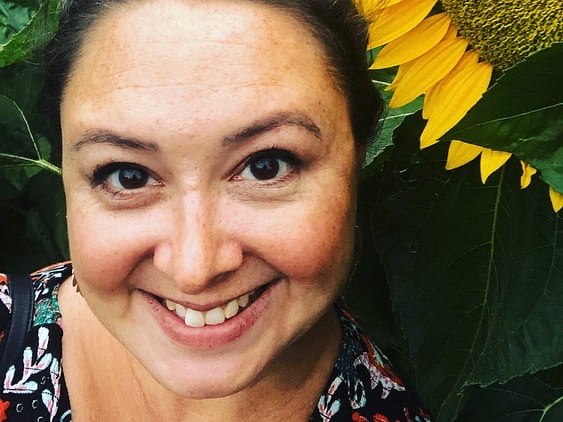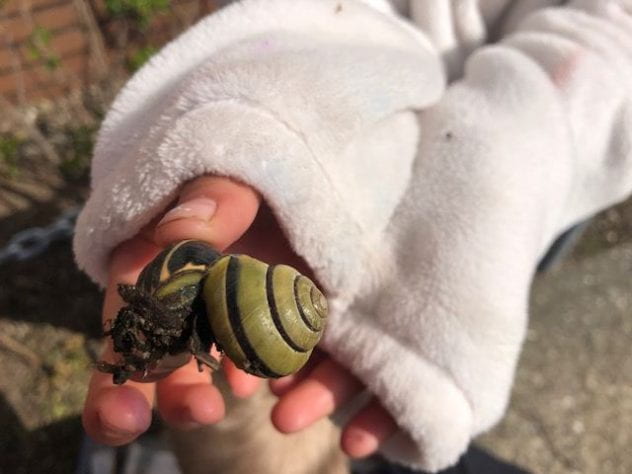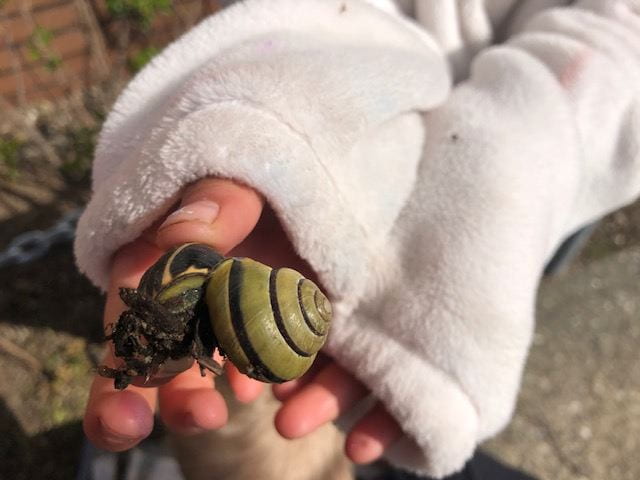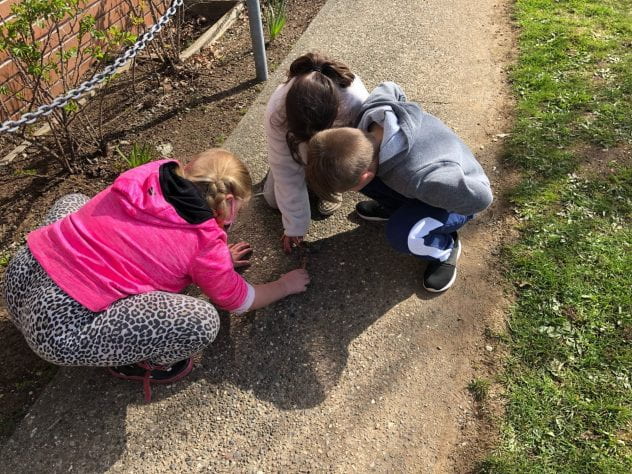 By Krista Rutschmann (Educator, MEd in Imaginative Education)
By Krista Rutschmann (Educator, MEd in Imaginative Education)
Every time we talk about Outdoor Education or Place-based learning, I think about our schoolyard and die a little inside. While others rhapsodize about the green spaces behind their schools or the creeks a couple of blocks away, I cringe at memories of syringes found, homeless camps under portable stairs and feces in our sandbox. (Please let it be dog!)
Connecting to Nature is something that has always come easily to me. I have many early memories of, what David Sobel calls, “transcendent nature experiences” (Sobel, 2008, p. 9). My earliest was running barefoot in dewy grass in our backyard, feeling the residual chill of the evening at the same time as the impending warmth of a hot July day. I remember relishing the sense of summer freedom and the chance to do whatever we wanted. I remember the mystery and magic that surrounded the creek across the street. Coming home in the dusky twilight with dirt up our legs, mosquito bites on our arms and an ice cream bucket filled with tadpoles. My most vivid and transcendent memory is standing alone in a grove of birch trees at a family camp, caught in the spell of an autumn sunset that glowed gold off the bark and the leaves and moved me to writing some (very bad) poetry.
I wanted that for my students. Those moments of freedom and mystery and magic. I wanted them to learn how to be still and quiet (For Pete’s sake!… Just to be quiet!) and to attune their ears to the subtle music of the nature that surrounded them. Early on in my research, I came upon this passage in Gillian Judson’s (2015) Engaging Imagination in Ecological Education: Practical Strategies for Teaching:
You might be wondering if it is possible to do IEE in an urban or suburban environment…One premise of IEE is that we are surrounded by wildness – by which I mean that which we have not tamed – we can all experience this wildness in meaningful and memorable ways… As students learn the mandated curriculum, IEE helps them understand how their bodies are engaged in the living world, regardless of the context… Did you know there is as much living diversity in one square metre of the soil surrounding a tree (even a tree planted in the city) as there is in an entire school? (p. 27)
Initially, I was excited as I read this passage, thinking, “Yes! This is what I need!” As I read on, I was let down. To be honest, it felt a bit dismissive. The message of: “Oh, there is lots there if you look for it!” seemed like a cop out to me. It didn’t really acknowledge that there is so much more readily accessible wonder and scope when surrounded by wild spaces. What about when you have to hunt for the wild? How do you connect to concrete? I set out to do just that.
My research took place in my second-grade classroom in central Abbotsford at the elementary campus of the Abbotsford School of Integrated Arts. My purpose was to use the cognitive tools of Imaginative Education to help students find and connect with the “wild” in their schoolyard and, in doing so, grow in their emotional self-awareness and deepen their ability to empathize. Eighteen students participated twice a week over six weeks (we had two students away for much of this time). I collected data through multiple means including student surveys, feeling check-ins, student journal entries, photos, class discussions, as well as anecdotal evidence and observations.
I discovered that, despite my initial misgivings, Imaginative Ecological Education can be done anywhere and with any class. In addition to the difficult aspects of the school’s location, I was faced with the challenge of teaching a class of students who were all experiencing varying amounts of trauma due to the global pandemic. Not only did our time outside increase their ability to connect with the outdoors, it also helped them to connect with themselves and become more regulated.
The key to facilitating an emotional engagement with Nature was in the use of story and cognitive tools. I wrote stories for my students that employed binary opposites, wonder, metaphor, emotions, heroic qualities and change agentry to teach them how to look and interact with the wild in our schoolyard. These stories set the stage for a time outside that was more focused and of higher interest. However, the most important facet of my project was allowing them to freely explore and learn from Nature herself. Unsurprisingly, this was the area I found most challenging as a teacher. I was trying to rein them in. I wanted them to commune with nature, but on my terms. I framed in our learning. I mixed up the ideas and portioned and poured it out into carefully planned and scaffolded lessons.
But Nature will always call what is hers back to herself.
The students would fly out of the school doors into her waiting arms. Delighted, they ran. Jealous, I tried to hold them back; but the cracks had formed and the green was already creeping into them. I was the concrete. I took them outside – yes – but also brought the four walls of the classroom with us to pen them in.
I have realized that it isn’t my role to carefully help the children find the “Wild” – they are the wild. My job is to make the cracks in the concrete and get out of the way so that they can grow.
Read my full Research Report: Connecting to Concrete: An Ethnographic Exploration of Place-Making in the Urban Schoolyard.
References
Judson, G. (2015). Engaging imagination in ecological education: Practical strategies for teaching. UBC press.
Sobel, D. (2008). Childhood and nature: Design principles for educators. Stenhouse publishers.



Very nice post